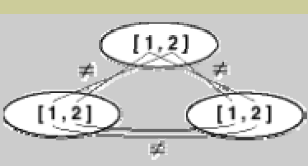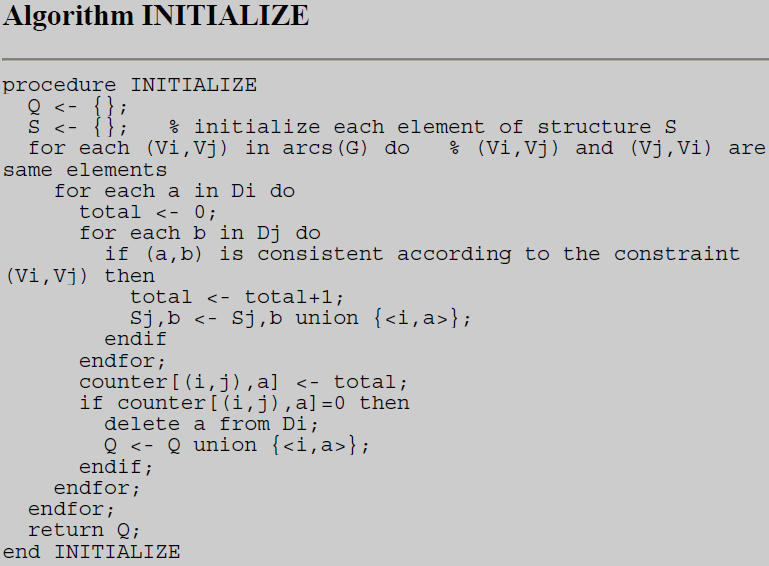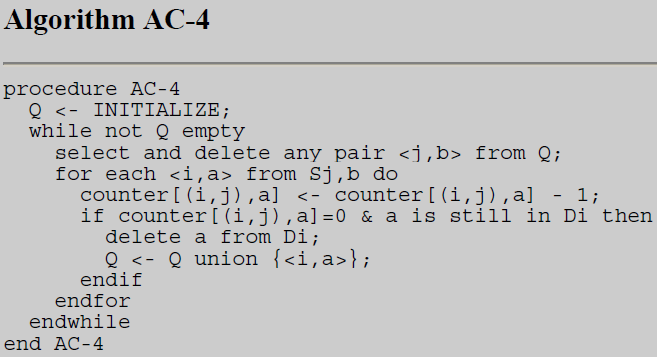SKEDSOFT

First, the algorithm AC-4 initializes its internal structures which are used to remember pairs of consistent (inconsistent) values of incidental variables (nodes) - structure Si,a. This initialization also counts "supporting" values from the domain of incindental variable - structure counter(i,j),a - and it removes those values which have no support. Once the value is removed from the domain, the algorithm adds the pair <Variable,Value> to the list Q for re-revision of affected values of corresponding variables.

After the initialization, the algorithm AC-4 performs re-revision only for those pairs of values of incindental variables that are affected by a previous revision.

Both algorithms, AC-3 and AC-4, belong to the most widely used algorithms for maintaining arc consistency. It should be also noted that there exist other algorithms AC-5, AC-6, AC-7 etc. but their are not used as frequently as AC-3 or AC-4.
Maintaining arc consistency removes many inconsistencies from the constraint graph but is any (complete) instantiation of variables from current (reduced) domains a solution to the CSP? If the domain size of each variable becomes one, then the CSP has exactly one solution which is obtained by assigning to each variable the only possible value in its domain. Otherwise, the answer is no in general. The following example shows such a case where the constraint graph is arc consistent, domains are not empty but there is still no solution satisfying all constraints.
